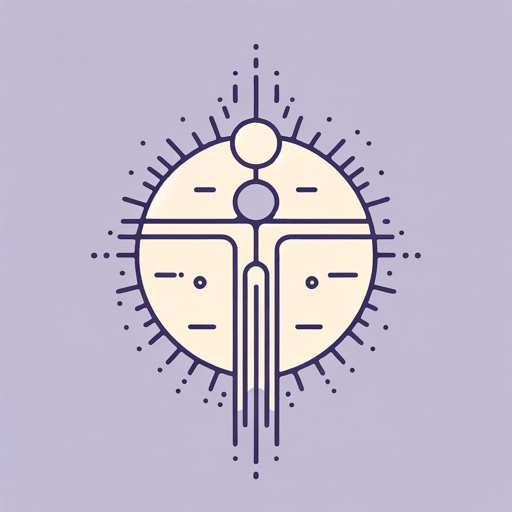50 pages • 1 hour read
Émile DurkheimThe Elementary Forms of the Religious Life
Nonfiction | Reference/Text Book | Adult | Published in 1912A modern alternative to SparkNotes and CliffsNotes, SuperSummary offers high-quality Study Guides with detailed chapter summaries and analysis of major themes, characters, and more.
Summary and Study Guide
Overview
The Elementary Forms of the Religious Life is a 1912 book by the French sociologist Émile Durkheim. It examines religion as a social phenomenon, suggesting that religion develops naturally in human cultures as an expected consequence of complex social factors. The basis of this thesis is Durkheim’s analysis of Aboriginal Australian religions, and particularly their focus on totemic rites and beliefs, from which he extrapolates general features of human sociology. The book is part of Durkheim’s larger project of studying the foundational principles of human society, which includes other works like The Division of Labor in Society (1893), The Rules of Sociological Method (1895), and Suicide (1897). Durkheim thus approaches the development of religion as a sociologist, and because of his influence in the field, he is now regarded as the founder of modern sociology. His contributions to social science are often ranked alongside those of figures like Karl Marx, Sigmund Freud, and Max Weber.
This study guide uses the 1965 edition of The Elementary Forms of the Religious Life from The Free Press, which reproduces the 1915 translation by Joseph Ward Swain.
Content Warning: Durkheim's analyses are based on early 20th-century understandings of Indigenous cultures and reflect Eurocentric and/or racist biases, as seen most clearly in his repeated references to “primitive” societies. His characterization of Aboriginal Australian practices are reductive or lacking nuance by modern standards.
Summary
The Elementary Forms of the Religious Life queries the origins of religion in human society by surveying features of Aboriginal Australian religion. By studying a religious system that appears simpler (to Émile Durkheim) than the complexity of other world religions, Durkheim hopes to perceive the fundamental patterns and purposes that lie at the root of human religion. He concludes that religion reflects society itself: The influence of social forces in communal settings provides the transcendence that humans interpret religiously and associate with the sacred. As such, Durkheim emphasizes the reality of religion and objects to the view that it’s false, and he maintains that religion is concerned with the real phenomena of human experience. The Elementary Forms of the Religious Life is divided into three main books, each of which addresses distinct parts of Durkheim’s assessment.
Book 1 addresses several preliminary questions, beginning with how to define religion in the first place. Since religions occur in many different forms across human cultures, Durkheim seeks a common factor shared by all. He discovers this common factor not in beliefs in spirits or deities, but in a basic classification of reality into mutually exclusive spheres of the sacred and the profane. According to his definition, a religion is a system that assigns these dual values while also producing a social community of members. With this definition in place, Durkheim examines several candidates for the most fundamental form of religion in the world. He dismisses both animism and naturism—the views that religion began with either a belief in spiritual realities or with a sense of dread and awe at the natural world—and settles instead on totemism, a religious-cultural belief system practiced by some Indigenous societies, in which religious values and communal identities are expressed through the use of a totem, an emblematic symbol.
Book 2 undertakes an exposition and analysis of totemism, especially as it is practiced in Aboriginal Australian societies. It begins with an overview of the beliefs and practices that characterize totemic religion, and then lays out Durkheim’s theory as to their emergence. Durkheim holds that totemic religion originated in the experience of communal clan gatherings, and the heightened emotional and inspirational effects of the social forces created in those gatherings impressed themselves on the individual humans with a sense of transcendence and moral vigor. This perception of social forces above oneself and acting upon oneself creates a religious sensibility in the people who experience it; they tend to want to repeat the experience in recurrent meetings and begin to associate that experience with the symbols of the plants and animals that inhabit the locale where they take place. Thus a simply social effect can quickly produce a religious system complete with rituals and symbols; the only necessity is the social effect of a communal gathering. Religion is, in this sense, simply a reflection of society itself, but society as it takes on a life of its own through the collective consciousness of its members.
Book 3 studies the rites and rituals of Aboriginal Australian totemism, while leading the reader toward Durkheim’s synthesis of ideas in the Conclusion. Various types of rituals are examined (negative, positive, and piacular), all of which serve to reaffirm the necessary social context by which society exerts its religious influence on the members of the group. The influence of society in this religious sense is so all-pervasive that Durkheim regards it as an essential feature of human experience, and not something that is likely to ever disappear from it. Rather, he accords to religion several notable developments in human society, crediting it with introducing the categories of thought that make philosophy, logic, and science possible. Thus Durkheim, while positing a social rather than a supernatural origin for religion, nonetheless presents it in a positive light and regards it as an appropriate object of scientific and sociological study.


